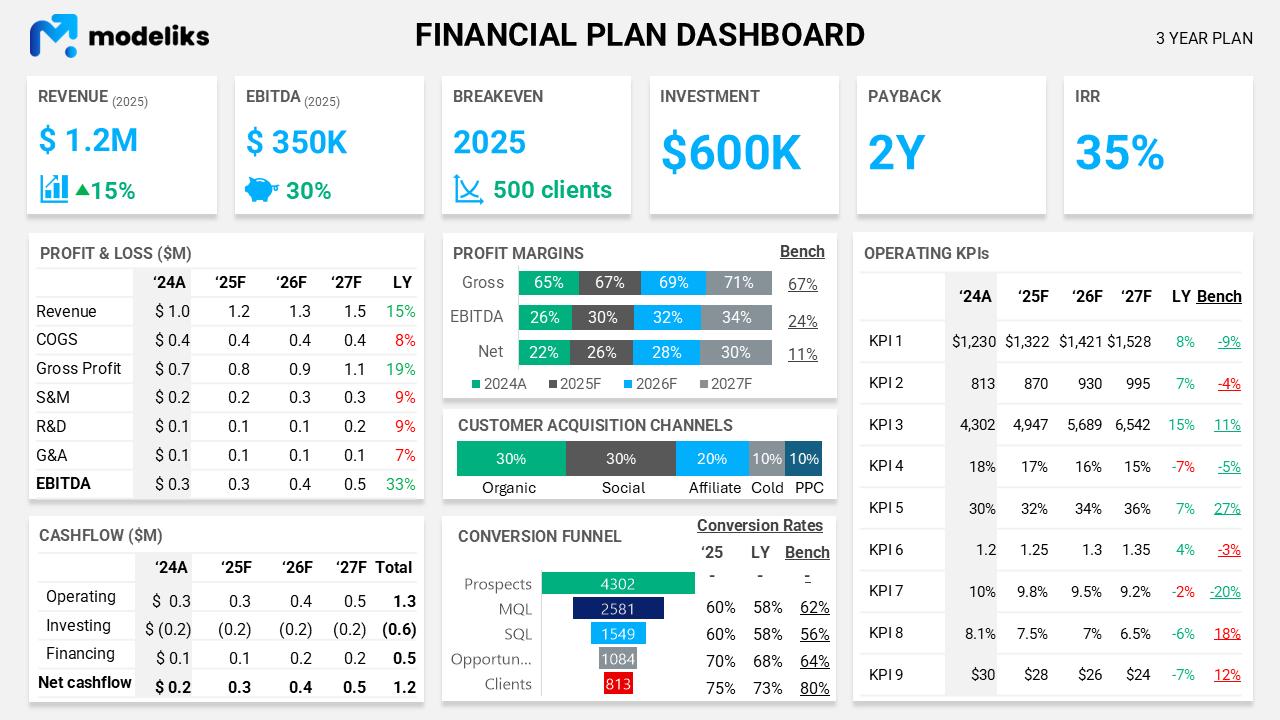Our Car Audio and Electronics Installation Financial Model Structure covers all the essential aspects you need to consider when starting or scaling a Car Audio and Electronics Installation business. By following this structure, you can better understand your revenue streams, costs, and assets, helping you optimize profitability and strategically plan for growth.
The Car Detailing and Cleaning Financial Model Structure
Starting or growing a Car Audio and Electronics Installation business requires a comprehensive financial model that outlines all potential revenues, direct costs, staffing needs, operating expenses, and asset investments. Such a model not only provides clarity on the existing financial structure but also helps identify lucrative revenue streams. Carefully crafted, this model is instrumental for business strategy and growth. The Car Audio and Electronics Installation financial model structure is essential.
Revenues
- Installation Services : Calculate revenue by multiplying the number of installations by the average price per installation.
- Product Sales : Revenue is determined by the volume of accessories and systems sold multiplied by their selling price.
- Customization Projects : Project-based revenue is calculated by assessing the total project fee for each customization.
- Repair Services : Revenue from repair jobs is based on the number of repairs and average charge per repair.
- Consultation Services : Income from expert advice is calculated by the number of consultations and fee per consultation, requiring accurate tracking.
Cost of Goods Sold
Costs directly associated with producing goods sold, such as the cost of car audio equipment, labor used in installations, and parts required for repairs, can be significant. However, businesses must account for these expenses as they impact overall profitability. Proper budgeting and planning can mitigate some financial strain.
Employees
-
Technician : Responsible for installations, customizations, and repairs, which often require precision.
-
Sales Associate : Handles customer interactions and sales transactions, where effective communication is essential.
-
Customer Service Representative : Manages inquiries and after-sales service, although challenges may arise.
-
Shop Manager : Oversees daily operations and ensures service quality, which is crucial for customer satisfaction.
-
Finance Officer : Manages financial records and billing processes, with attention to detail being paramount.
Operating Expenses
-
Rent : The cost for the physical location of the business is essential.
-
Utilities : Include electricity, water, and internet costs.
-
Marketing and Advertising : The budget for promoting services and products must not be overlooked, as they contribute to overall success.
-
Insurance : Provides coverage for business premises and employee liabilities, which is crucial.
-
Supplies and Materials : Consumables required for installations and repairs are necessary, but they can burden finances.
-
Equipment Maintenance : Regular servicing of tools and equipment ensures longevity.
-
Licensing Fees : Payments for business and trade licenses are mandatory.
-
Transportation : Costs involved in logistics and supply transportation should be calculated carefully.
-
Training and Development : Represents an investment in employee skill enhancement, as a well-trained workforce is invaluable.
-
IT and Software : Expenses on software and IT infrastructure management are critical.
Assets
-
Installation Equipment : Tools and machinery necessary for installation services.
-
Work Vehicles : Cars or vans used for mobile installations and repairs.
-
Inventory : Stock of audio systems and electronic accessories.
-
Office Equipment : Computers, chairs, desks, and other necessary office items.
Funding Options
Driver-based Financial Model for Car Audio and Electronics Installation
A truly professional financial model for a Car Audio and Electronics Installation business is based on the operating KPIs (also known as “drivers”) relevant to the sector. Here are some examples:
- Number of Installations per Month measures business volume and efficiency.
- Average Revenue per Installation evaluates pricing strategies.
- Conversion Rate shows consultations resulting in sales, indicating sales effectiveness.
- Customer Retention Rate indicates repeat customers, showing loyalty.
- Inventory Turnover highlights how often stock is sold and replaced.
- Gross Margin examines gross profit as a revenue percentage, assessing profitability.
- Operating Costs Ratio shows operating expenses as total revenue share.
- Staff Utilization Rate : The percentage of staff capacity actively engaged in revenue-generating activities.
- Client Satisfaction Score : Measures service quality through customer feedback.
- New Customers per Month : Indicator of business growth and market penetration.
Driver-based financial planning is a process of identifying key activities (referred to as ‘drivers’) that have the highest impact on your business results and then building your financial plans based on those activities. It establishes relationships between financial results and the resources needed to achieve them. If you want to know more about driver-based financial planning and why it is the right way to plan, see the founder of Modeliks explaining it in the video below.
Need a business plan?
Create one with Modeliks AI in the next hour!
AI powered business planning for Startups and SMEs.
The Financial Plan Output
The objective of the financial forecast outputs should enable you, your management, board, or investors to:
- Comprehend how your Car Audio and Electronics Installation enterprise is likely to perform in the future.
- Gain assurance that the plan is thorough, realistic, and attainable.
- Ascertain necessary investments and expected returns on investment.
To achieve these goals, here is a one-page template to effectively present your financial plan.

- Profit and Loss
- Balance Sheet
- Cash Flow Statement
Car Audio and Electronics Installation Financial Model Summary
A professional Car Audio and Electronics Installation financial model will help you think through your business, identify resources needed to achieve your targets, set goals, measure performance, raise funding, and make confident decisions to manage and grow your business. A well-structured model provides comprehensive business landscape views, serving as a vital tool for strategic financial planning and management. Though complex, it is essential for success, allowing for better decision-making and planning.
If you need help with your financial plan, try Modeliks , a financial planning solution for SMEs and startups or contact us at contact@modeliks.com and we can help.
Author:
Blagoja Hamamdjiev
, Founder and CEO of
Modeliks
, Entrepreneur, and business planning expert.
In the last 20 years, he helped everything from startups to multi-billion-dollar conglomerates plan, manage, fundraise, and grow.

TAKE MODELIKS FOR A SPIN
Not sure which plan?
Start with a 15 days free trial.
You will have access to the full functionality of Modeliks. The only restriction in the free trial is that you cannot download or share your business plan outside Modeliks. Credit card is not required to subscribe for the free trial.






